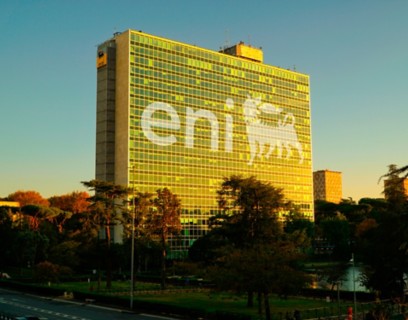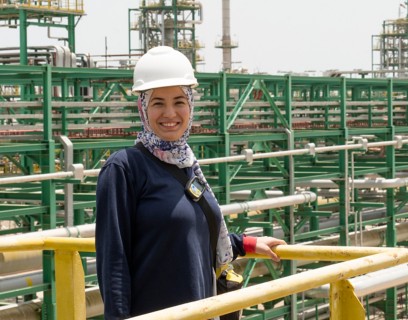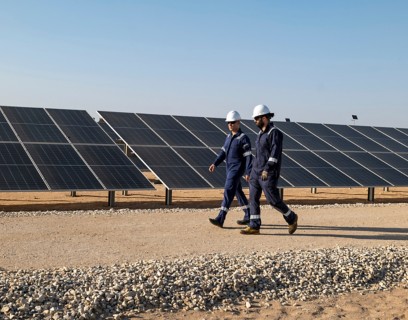
Or , our new artificial intelligence tool.
MyEni Login
Report's falsehoods about the project in Zambia
In the episode aired on June 19, 2023, the Rai 3 program Report broadcast a service about the Luangwa Community Forests Project (LCFP), a forest conservation and local development project in Zambia in which Eni is also involved.
The report contains numerous errors and inaccuracies.
One of the local representatives interviewed by Report even stated publicly that his interview was manipulated.
Before addressing the claims made by the broadcast, we believe it is our duty to provide context for the project to explain how it works in a transparent, clear, and straightforward manner.
Deforestation is one of the main factors contributing to global warming, as well as to the radical reduction of biodiversity, with negative impacts on local communities. In many parts of the world, this phenomenon is linked to economic needs and lack of alternatives. This is why, for years, scholars, researchers, and institutions have been looking for ways to reduce deforestation while ensuring concrete benefits for communities. One of the most effective methods is the calculation and sale of carbon credits derived from forest protection.
In Zambia, 70% of household energy consumption comes from firewood or charcoal used for cooking. Over the years, the country has also lost part of its forest heritage due to unsustainable and unprofitable agriculture.
For this reason, the project was launched in 2014, and Eni joined in 2019; the initiative helps reduce the causes of deforestation and its associated emissions while promoting sustainable economic development. How? By building schools, clinics, and water wells in remote areas, as well as by supporting agriculture and entrepreneurship.
This project follows the parameters of the REDD+ protocol, developed by the United Nations and sanctioned by COP16 in 2010. How does it work? By protecting their forests, local communities can generate carbon credits. The revenue from their sale, which communities receive from organizations, institutions, and companies such as Eni, are then reinvested in local development initiatives. The communities themselves autonomously manage the funds they receive through collective meetings, where they identify projects and decide how to invest the funds through a voting process, thus based on a democratic and majority procedure.
According to Report, the project is concentrated in an area that is largely a natural park that has been protected for years. Also, it suggests that the population affected by the project is very small.
FALSE
The project covers over 1.2 million hectares in two Zambian provinces and does not include national parks. It involves 17 local communities, benefiting approximately 220,000 people.
Although the project does not operate inside national parks, it contributes to preserving so-called ecological corridors, i.e. buffer zones between parks that are essential for the safe movement, like from poaching, of many animal species, including endangered ones like leopards, lions, and wild dogs.
Additionally, the 2024 report by the Climate, Community & Biodiversity (CCB) Standards programme confirms that the project has improved the area's ecological integrity and biodiversity.
According to Report, the project does not generate any carbon credits because the project area is overestimated and the initiative is not really reducing deforestation.
FALSE
The amount of CO₂ emissions avoided through forest conservation is calculated by comparing project areas with so-called reference areas outside the project. These reference areas have similar vegetation, morphology, and population density. To establish a baseline, data from the past 30 years in the reference area were analyzed.
The outcomes of counteracting deforestation and the resulting avoided CO₂ emissions are calculated by comparing deforestation rate in the project area with the baseline reference areas. To ensure accuracy, the baselines used as a reference point to measure the positive impacts of the project are reviewed every six years according to approved methodologies.
Since its inception, LCFP has reduced deforestation in the project area to a significantly lower level than the average rate in Zambia's Eastern Province recorded in the studies prepared by the Government with the support of the World Bank, in order to define the policy framework for climate action.
The carbon credits, generated according to voluntary schemes and purchased by Eni (8 million credits, equivalent to 8 Mton of CO₂ in the time frame 2019-2024), are used solely to voluntarily offset its residual emissions.
To further ensure the integrity of Eni's actions, the project has been validated and verified by independent third-party auditors certified for this type of assessment. The reports are available for public consultation.
Additionally, periodic third-party audits are conducted, ensuring compliance with quality and certification criteria, as well as the proper calculation of carbon credits to be issued. Importantly, a mandatory rotation system ensures that no auditor can certify a project for more than six consecutive years, maintaining independence and transparency.
Furthermore, auditors authorized to conduct audits on REDD+ projects must be accredited in special professional registers such as ANSI (American National Standards Institute). Lastly, the registry bodies conduct their own review of individual reports before validating each verification.
According to Report, project management is opaque and ineffective, suggesting that it is directed by third parties.
FALSE
Most of the revenues from the sale of carbon credits are allocated locally. Funds are managed by the Community Forest Management Groups, established under the Zambian law, whose representatives are locally elected by the communities. Their mandate is to protect local forests.
Once the proceeds from the sale of carbon credits are received, the groups decide how to allocate them, collectively selecting the initiatives to be developed according to the communities’ needs (e.g. schools, clinics, and clean water wells). The communities vote on how to spend the proceeds. This mechanism gives the forest and its protection a direct and tangible value for the local communities.
To date, funds have been allocated to over 230 community projects covering clean water access, healthcare, education, vocational training, improved agricultural practices, and microcredit programs.
Key impacts include:
- Over 36,000 people benefiting from education and training projects
- More than 30 microfinance initiatives
- 67 school infrastructure projects
- 27 healthcare infrastructure projects
- Over 130 water wells and drinking water access initiatives, benefiting more than 27,000 people
Thanks to the project's success, in 2022, 5 new communities joined the initial 12 , bringing the total to 17.




According to Report, the project wastes funds on works and means of transport of little use and of dubious transparency
FALSE
The vehicles mentioned in the Report service, like the one mentioned by the Chairman of the Luembe Community Resources Board, are used to monitor the project area, assess its progresses, and respond to any problems promptly by going to the site.
It is important to explain that we are talking about areas that are difficult to reach, where there are no means comparable to Western standards, such as buses or trains, so these vehicles help to monitor the project by cutting travel time. As a matter of fact, it can take several days to reach some of the areas of the initiative, for example those where some schools or clinics are located.
According to Report, some of the new classrooms in the Luembe community are unused because they lack desks and chairs for pupils.
FALSE
The classrooms were already ready at the time Report broadcasted its service and are being used.
Once the work has been completed, the school buildings must be handed over to the local institutions, which are responsible for their management since they are public property. Before the official handover can take place, it is necessary to wait for authorization, which is obtained after compliance with the legal standards of the country.
In the case of the classrooms mentioned, at the time Report broadcasted its service, the construction of bathrooms for the students, which did not exist in the old school, was being completed. Upon completion, the school was formally handed over to the community and the Ministry of Education in a ceremony held on 17 November 2023.
According to Report, there was not much deforestation in the Luembe area. This is the assertion that the programme lets it be understood through the interview of the Luembe community Chief, Lazarous Mulowa, who is, moreover, quoted in the subheading with the wrong name, that of his brother Gerard.
FALSE
Report's claims were strongly contested by the Chief of the Luembe community who, in the attached letter, harshly denied, publicly, what the TV programme reported.
For the realization of the TV service, Eni received a series of questions from Report's editorial staff, which were answered extensively. However, these responses were ignored in the TV program.
Not only that: Report purposely stated that it never received the answers from Eni, despite the fact that the chronology of the e-mails states the opposite.



A teacher at the blackboard and a group of kids listening


























